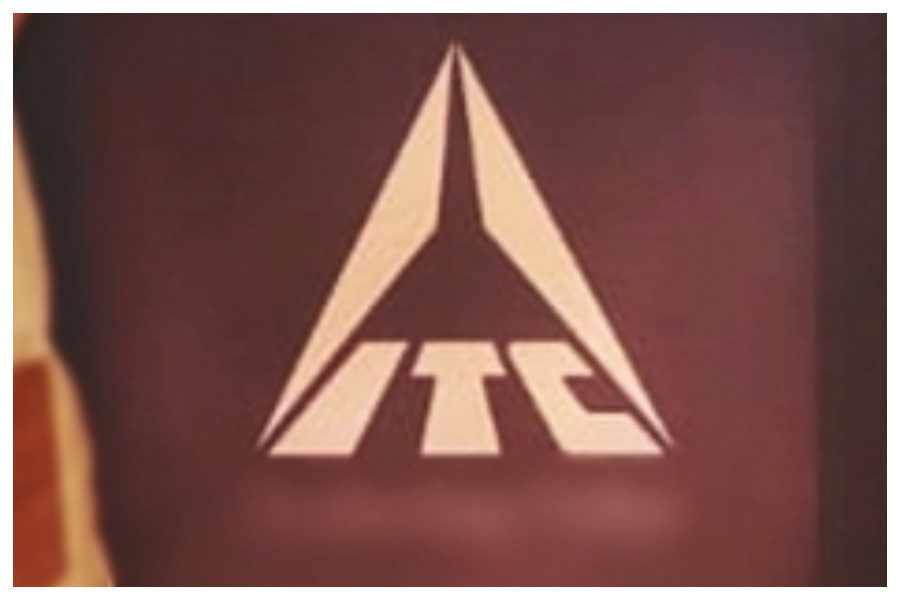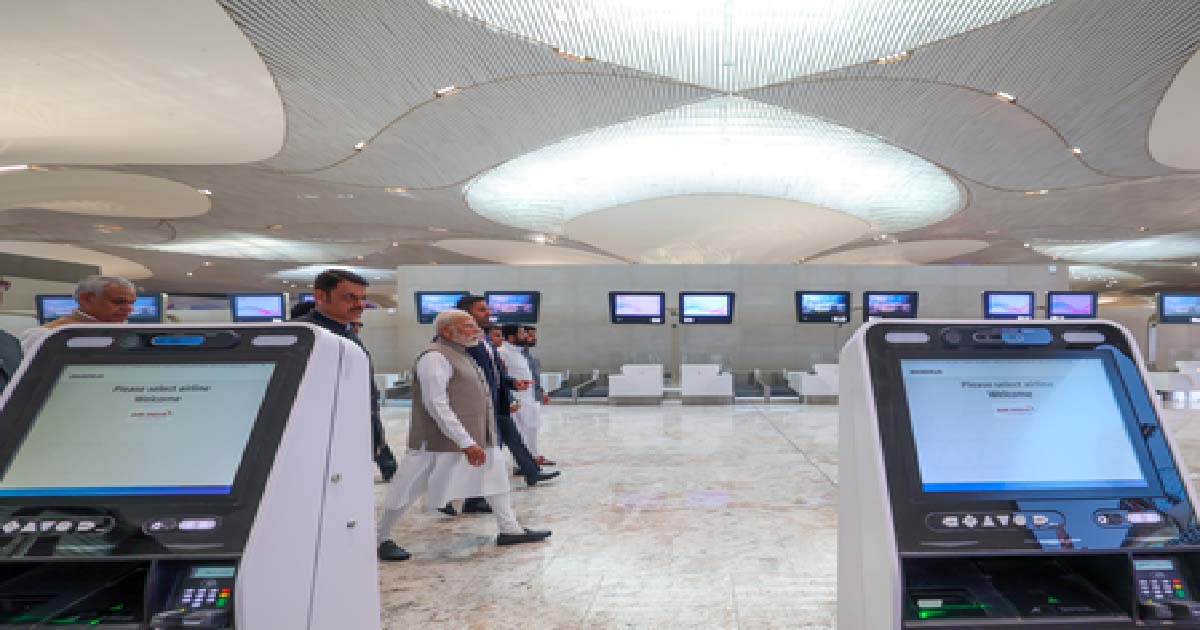Business
ITC scales up its 360-degree interventions for ‘Greener Earth’

On this World Environment Day, ITC reaffirmed its commitment towards a ‘Greener Earth’ through its bold Sustainability 2.0 agenda.
Building on its sustainability journey of over two decades, ITC, under the leadership of its Chairman Sanjiv Puri, has articulated an ambitious Vision to scale up its efforts in fighting climate change, whilst supporting large scale sustainable livelihoods.
Commenting on ITC’s multidimensional sustainability initiatives, S Sivakumar, Group Head, Agri, IT and Sustainability, ITC Ltd, said: “ITC has, over the years, implemented innovative business models which synergise the building of economic, environmental, and social capital as a unified strategy. Today, our ambitious Sustainability 2.0 agenda aims to further strengthen ITC’s efforts towards decarbonisation, building green infrastructure, promoting climate-smart and regenerative agriculture, ensuring water security for all, restoring biodiversity through nature-based solutions, creating an effective circular economy, creating sustainable packaging solutions and enabling the transition to a net zero economy. We believe this will go a long way in combating the climate crisis and supporting meaningful livelihood opportunities.”
ITC is today the only Company of comparable dimensions to be water, carbon, and solid waste recycling positive for over a decade and a half.
In recognition of its superior Environmental, Social and Governance (ESG) models, the Company has been rated ‘A’ at the Leadership Level for both Climate Change and Water Security by CDP, ‘AA’ by MSCI-ESG (the highest amongst peers) and was also included in the Dow Jones Sustainability Emerging Markets Index.
As a part of its efforts to transition towards Net Zero, ITC has made significant investments in renewable energy. Currently, clean energy powers 24 factories, 14 hotels, and five office buildings across 14 states.
Last year, ITC set a target to meet 100 per cent of its grid electricity requirements from renewable sources by 2030. Currently, it meets around 42 100 per cent of all its electrical energy requirements through renewable means.
With a focus on solar energy, the company has commissioned both onsite and offsite plants across states. ITC has maximized usage of rooftops of its Integrated Consumer Goods Manufacturing and Logistics (ICML) facilities, factories and warehouses for solar power generation. As many as 39 properties of ITC are Platinum rated green buildings by USGBC-LEED/IGBC. ITC’s Windsor Hotel in Bengaluru became the first hotel in the world to be LEED� Zero Carbon certified, followed by ITC Grand Chola and ITC Gardenia.
To contribute to a ‘Greener Earth’, ITC has also been running an integrated water stewardship programme, covering over 1.33 million acres of land and creating a total rainwater harvesting potential which was over 3 times the net water consumed by its operations during last year. The demand management interventions for promoting water efficiency in agriculture have resulted in potential water savings to the tune of 496.5 million cubic metres till date. Following the Alliance for Water Stewardship (AWS) Platinum level certification of ITC’s Paperboards and Specialty Papers unit at Kovai, the first ever site in India to achieve the highest global standard, the Company is in the process of implementing the AWS Standards and obtaining certification at other units in high water stress areas.
Similarly, ITC’s extensive biodiversity programme focuses on reviving ecosystem services provided to agriculture such as natural regulation of pests, pollination, nutrient cycling, soil health retention and genetic diversity, which have witnessed considerable erosion over the past few decades. The initiative has cumulatively covered 1.3 lakh acres in more than 29 districts across 10 states. ITC aims to expand the programme to cover over 10,00,000 acres by 2030.
To de-risk agriculture from effects of climate change, ITC has introduced a Climate Smart Agriculture programme, which covers 15 lakh acres, benefitting over 4.5 lakh farmers. As an integral part of this, a Climate Smart Village initiative covering over 2,500 villages and over 8.2 lakh acres, has led to reduction in GHG emissions by up to 66 100 per cent and an increase in communities’ income by up to 93 100 per cent for soyabean crop in Madhya Pradesh. ITC’s large-scale social and farm forestry programme has greened over 9,50,000 acres, generating over 173million person days of employment.
Moving towards Circular Economy, the Company went beyond plastic neutrality in 2021-22 by collecting and sustainably managing more than 54,000 tonnes of plastic waste across 35 states/union territories. ITC’s flagship solid waste management programme, ITC ‘WOW’ or Well Being Out of Waste, programme, has covered over 1.8 crore citizens providing sustainable livelihood to more than 17,300 waste collectors.
In line with its Vision for a sustainable packaging future, ITC’s Paperboards and Packaging Businesses have leveraged cutting-edge research and innovation capabilities of ITC Life Sciences and technology Centre to launch several first-of-its kind packaging solutions, which facilitate reduction, substitution and recyclability of plastic.
The company is now endeavouring to ensure that over the next decade, 100 per cent of its packaging is reusable, recyclable or compostable/biodegradable.
Business
ED arrests real estate firm MD in PMLA case, accused sent to 14-day custody

New Delhi, Nov 15: The Enforcement Directorate (ED) has arrested Ocean Seven Buildtech Pvt. Ltd. (OSBPL) Managing Director Swaraj Singh Yadav after conducting searches at nine locations across Delhi-NCR and other regions in a money-laundering probe under the Prevention of Money Laundering Act (PMLA), 2002, an agency statement said on Saturday.
The action stems from allegations that Yadav diverted and laundered funds collected from homebuyers across multiple projects, including those under the Pradhan Mantri Awas Yojana (PMAY).
The searches on Thursday led to the recovery of Rs 86 lakh in cash, suspected to be proceeds of crime, along with incriminating documents and digital evidence.
According to the ED, Yadav orchestrated a large-scale diversion of homebuyer funds through fraudulent cancellation and resale of units at inflated prices, cash-based premiums collected outside banking channels, and misuse of escrow accounts.
He allegedly routed substantial sums into shell entities and concealed cash proceeds with relatives, the ED statement said.
Investigators also found a pattern of rapid liquidation of assets held personally and through company entities in Gurugram, Maharashtra, and Rajasthan, which the agency believes was intended to secure illicit gains and evade legal scrutiny.
His wife and children have already relocated to the United States, the probe revealed.
The agency said Yadav operated a dual-payment mechanism in the resale of PMAY flats and even in the sale of parking spaces — routing only nominal amounts through banks while collecting the bulk in cash. These activities form part of a wider probe linked to multiple FIRs alleging cheating, forgery, and other predicate offences.
Following his arrest, Yadav was produced before the Court of ASJ-06 at Patiala House Courts on Friday, in compliance with Supreme Court directions.
After detailed submissions from both sides and a pass-over granted to allow him legal assistance, the court sent him to ED custody for 14 days, until November 28.
The agency has been directed to produce him before the court at 2 p.m. on the date of expiry of remand.
The ED said it is pursuing further investigation to trace, freeze, and attach assets acquired from the laundered funds, to ensure recovery and restitution to affected homebuyers.
Business
IndiGo to start flights from Navi Mumbai International Airport from Dec 25

Mumbai, Nov 15: Low-cost airline IndiGo on Saturday announced flight operations from the newly-opened Navi Mumbai International Airport (NMIA) starting December 25, connecting the airport to 10 cities across the country.
IndiGo will connect the future-ready airport to 10 cities, including Delhi, Bengaluru, Hyderabad, Ahmedabad, Lucknow, North Goa (Mopa), Jaipur, Nagpur, Cochin, and Mangalore, the airline said in a statement.
The airline said it plans to expand operations at NMIA progressively by adding direct routes to more destinations in due course.
NMIA, the second airport in the Mumbai metropolitan area, is designed to complement Chhatrapati Shivaji Maharaj International Airport and meet growing demand for air travel from India’s financial capital.
NMIA is expected to enhance regional connectivity and support economic development in western India due to its strategic location.
By enhancing regional connectivity and supporting economic development in western India, the launch of IndiGo’s operations will connect the airport to its vast domestic network of 95 airports across the country, it added.
The Navi Mumbai International Airport was inaugurated by Prime Minister Narendra Modi last month, as a major achievement in India’s economic development and “a symbol of Bharat’s aspirations”.
PM Modi said that Mumbai welcomed its second international airport, marking a significant milestone in its journey to becoming Asia’s premier connectivity hub. “Through this new airport, the farmers of Maharashtra will be able to connect with supermarkets in Europe and the Middle East as well,” he observed.
NMIA will ease congestion at Chhatrapati Shivaji Maharaj International Airport and significantly increase India’s aviation capacity.
The Navi Mumbai International Airport Private is designed to accommodate both domestic and international passengers, featuring state-of-the-art facilities. It includes a 3,700-metre runway capable of handling large commercial aircraft, modern passenger terminals, and advanced air traffic control systems.
Business
Stock markets end week on a strong note as NDA secures landmark win in Bihar

Mumbai, Nov 15: Indian equity markets ended the week on a strong note, with benchmark indices gaining on the resolution of the US government shutdown, supported by strong domestic fundamentals, better-than-expected Q2 earnings, easing inflation and NDA’s historic victory in Bihar, according to analysts.
Record-low October inflation reinforced expectations of an RBI rate cut, adding momentum to domestic equities.
According to Vinod Nair, Head of Research, Geojit Investments Limited, sectoral momentum was broad-based, led by gains in IT, Pharma, healthcare and Auto stocks.
“Toward the week’s close, the NDA’s Bihar election victory bolstered investor confidence, but fading expectations of a U.S. Fed rate cut triggered profit booking in IT stocks, tempering their earlier gains,” he mentioned.
The indices remained under pressure for most of the session on Friday, oscillating between losses and brief recoveries, before a strong late-afternoon rebound pushed them into the green.
Volatility picked up as markets tracked the Bihar election outcome, the day’s key trigger.
Sentiment was also weighed down by weak global cues after Wall Street fell sharply overnight, led by declines in Nvidia and other tech majors as investors dialled back hopes of near-term rate cuts amid lingering inflation worries, according to a note by Bajaj Broking Research.
At close, the Sensex ended 84 points or 0.1 per cent higher at 84,563, while the Nifty finished 31 points up at 25,910. Sectoral trends were mixed, with PSU banks leading gains at 1.17 per cent, followed by firm moves in pharma and FMCG.
Energy and infrastructure saw mild upticks. On the downside, IT declined 1.03 per cent, while auto, metal, and realty ended lower.
Among the broader market space, Nifty Small-cap 100 rose 0.38 per cent, while the Midcap 100 gained 0.08 per cent.
According to analysts, Nifty on the weekly chart has formed a strong bull candle with a higher high and a higher low signaling pullback after two weeks of corrective decline, “in line with our expectations from the key support area of 25,400-25,300”.
Going ahead, bias continues to remain positive and a follow through strength above last month high of 26,100 will open upside towards the previous all-time high of 26,277 in the coming week.
Looking ahead, market direction will hinge on key macro triggers such as India’s PMI data, US jobless claims, FOMC minutes and progress on US–India trade negotiations.
-

 Crime3 years ago
Crime3 years agoClass 10 student jumps to death in Jaipur
-

 Maharashtra1 year ago
Maharashtra1 year agoMumbai Local Train Update: Central Railway’s New Timetable Comes Into Effect; Check Full List Of Revised Timings & Stations
-

 Maharashtra1 year ago
Maharashtra1 year agoMumbai To Go Toll-Free Tonight! Maharashtra Govt Announces Complete Toll Waiver For Light Motor Vehicles At All 5 Entry Points Of City
-

 Maharashtra1 year ago
Maharashtra1 year agoFalse photo of Imtiaz Jaleel’s rally, exposing the fooling conspiracy
-

 National News1 year ago
National News1 year agoMinistry of Railways rolls out Special Drive 4.0 with focus on digitisation, cleanliness, inclusiveness and grievance redressal
-

 Maharashtra1 year ago
Maharashtra1 year agoMaharashtra Elections 2024: Mumbai Metro & BEST Services Extended Till Midnight On Voting Day
-

 National News1 year ago
National News1 year agoJ&K: 4 Jawans Killed, 28 Injured After Bus Carrying BSF Personnel For Poll Duty Falls Into Gorge In Budgam; Terrifying Visuals Surface
-

 Crime1 year ago
Crime1 year agoBaba Siddique Murder: Mumbai Police Unable To Get Lawrence Bishnoi Custody Due To Home Ministry Order, Says Report












